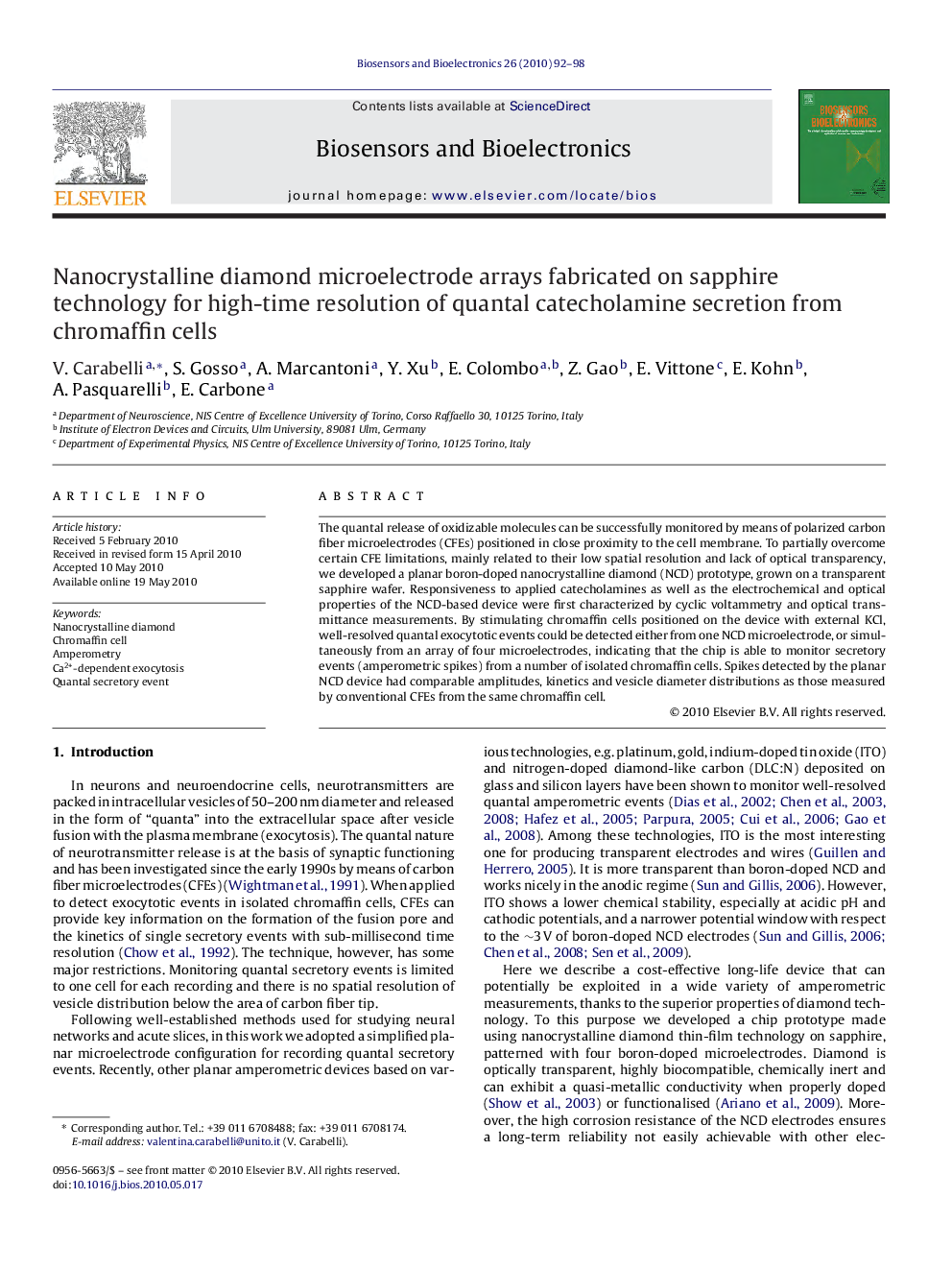| Article ID | Journal | Published Year | Pages | File Type |
|---|---|---|---|---|
| 867938 | Biosensors and Bioelectronics | 2010 | 7 Pages |
The quantal release of oxidizable molecules can be successfully monitored by means of polarized carbon fiber microelectrodes (CFEs) positioned in close proximity to the cell membrane. To partially overcome certain CFE limitations, mainly related to their low spatial resolution and lack of optical transparency, we developed a planar boron-doped nanocrystalline diamond (NCD) prototype, grown on a transparent sapphire wafer. Responsiveness to applied catecholamines as well as the electrochemical and optical properties of the NCD-based device were first characterized by cyclic voltammetry and optical transmittance measurements. By stimulating chromaffin cells positioned on the device with external KCl, well-resolved quantal exocytotic events could be detected either from one NCD microelectrode, or simultaneously from an array of four microelectrodes, indicating that the chip is able to monitor secretory events (amperometric spikes) from a number of isolated chromaffin cells. Spikes detected by the planar NCD device had comparable amplitudes, kinetics and vesicle diameter distributions as those measured by conventional CFEs from the same chromaffin cell.
